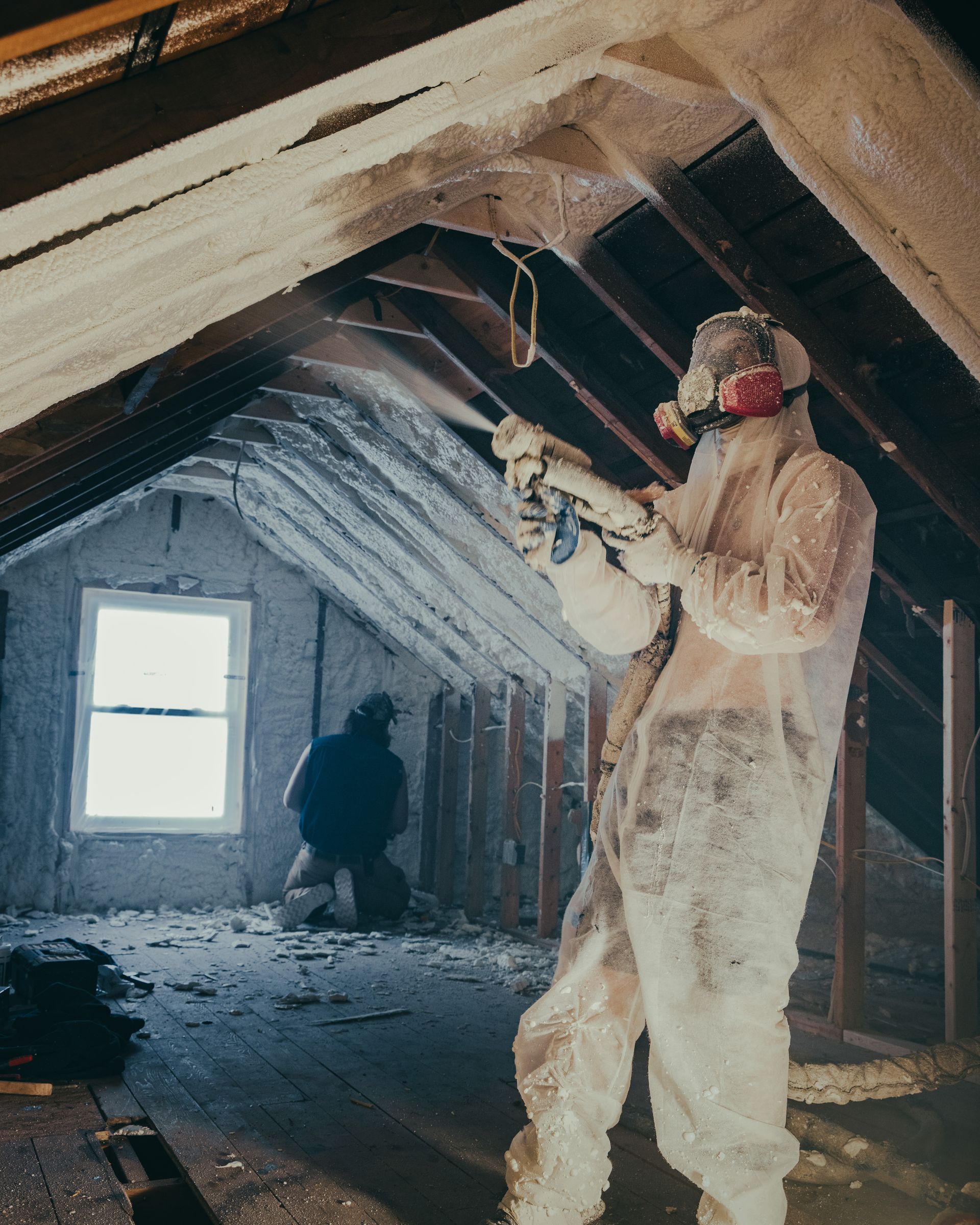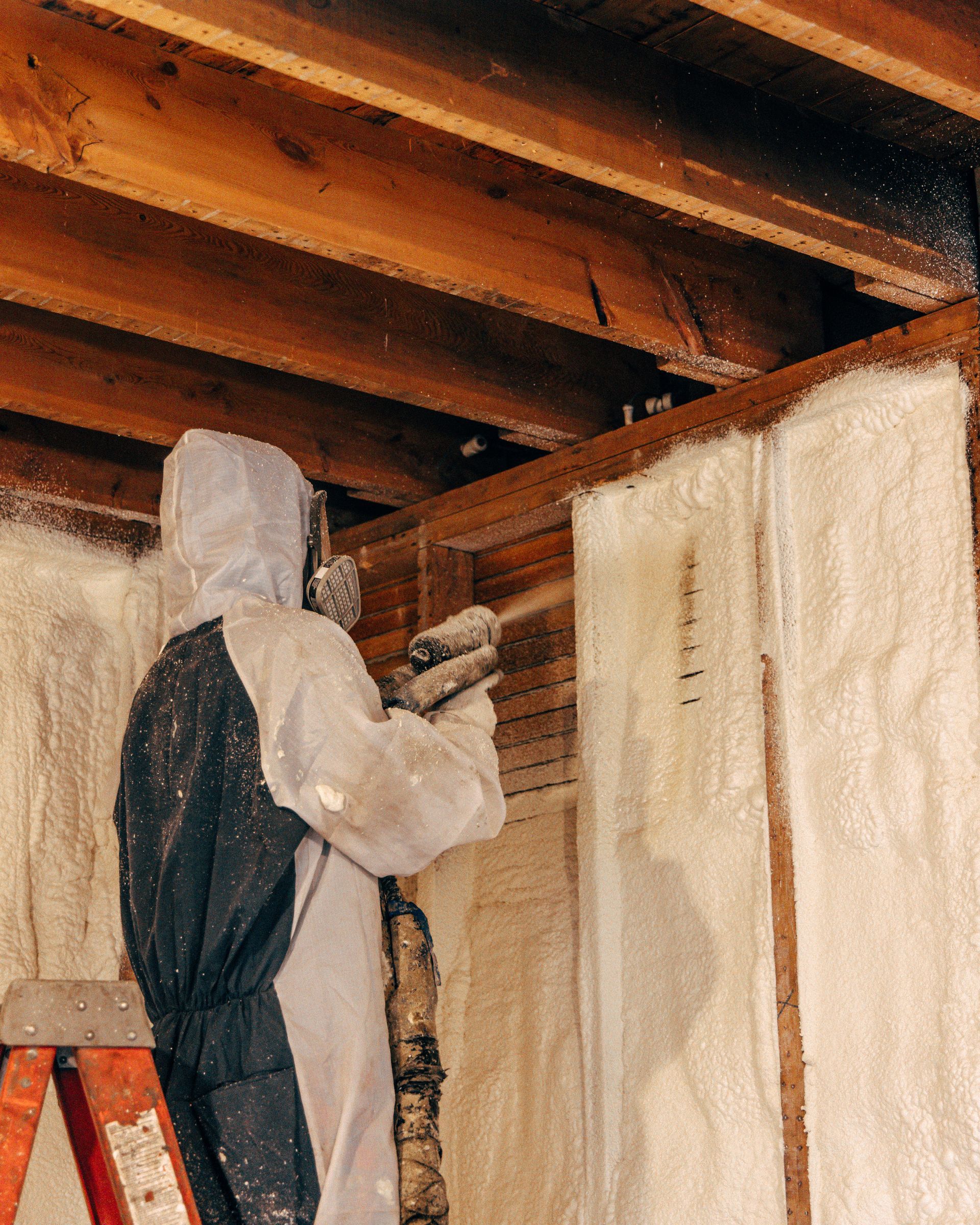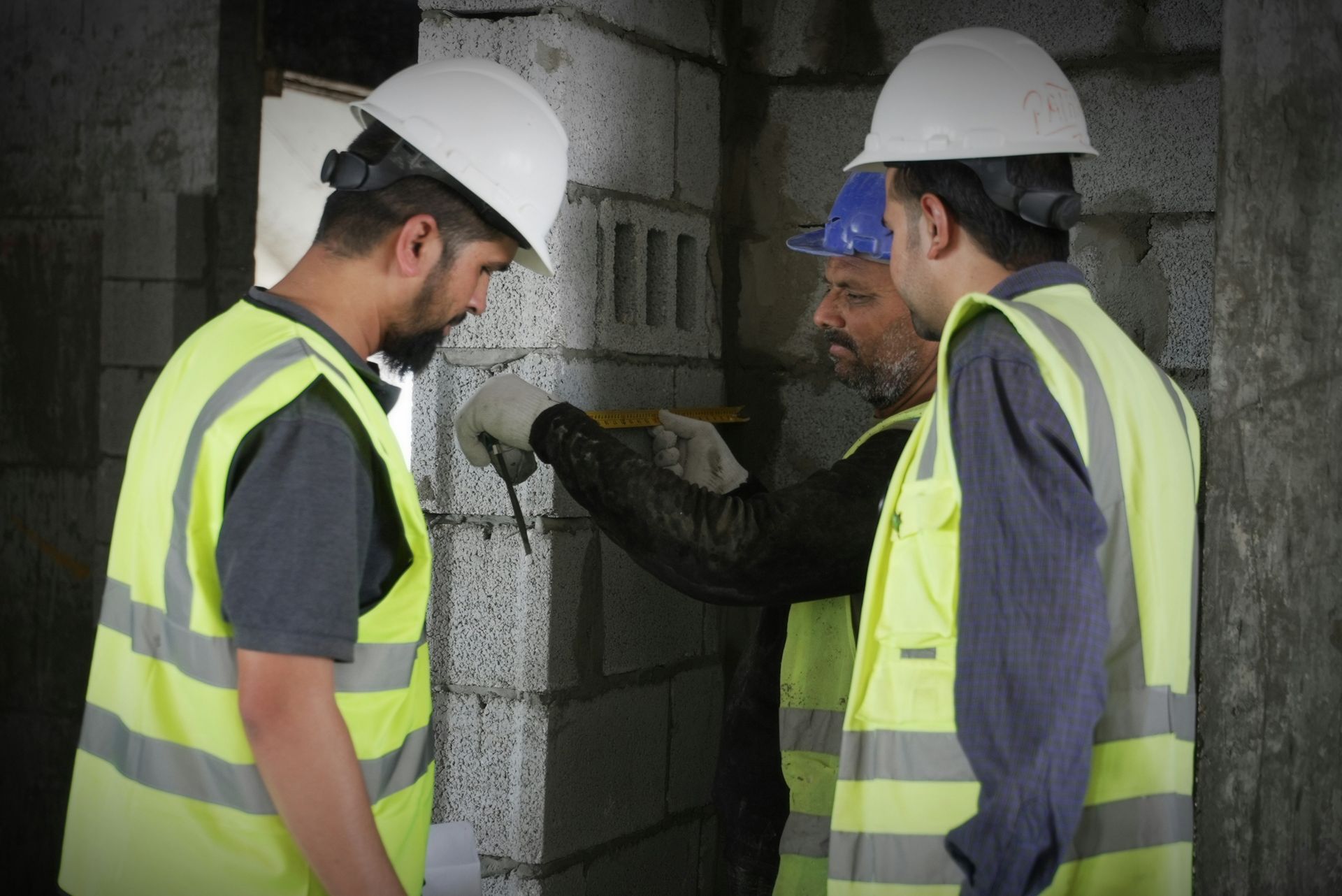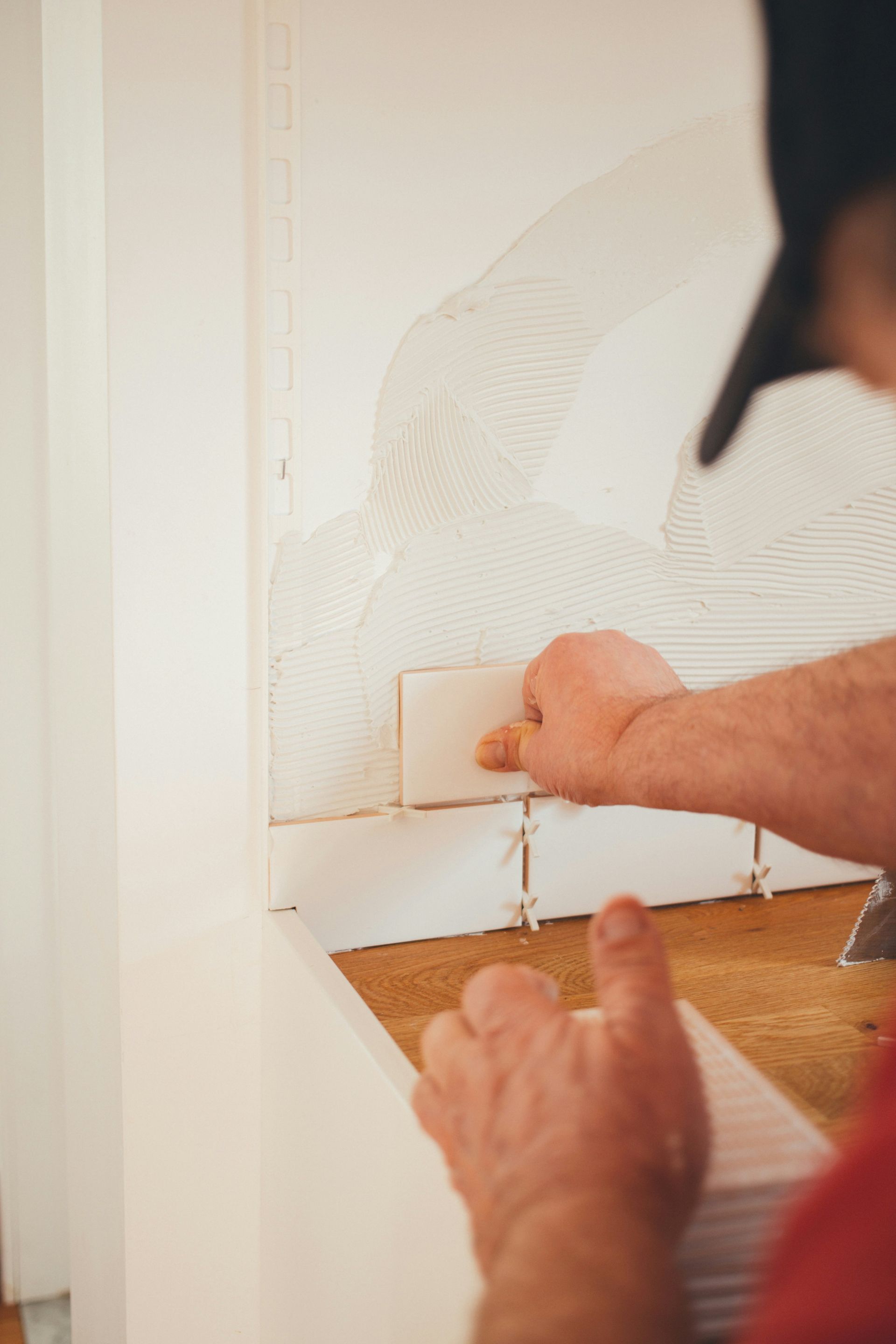Essential Advantages of Choosing Spray Foam Insulation for Your Home

Spray foam insulation offers homeowners a powerful solution to combat mildew, reduce noise, and lower utility bills. This versatile material can transform attics and other spaces into energy-efficient zones, significantly decreasing a home’s carbon footprint. From enhancing comfort to providing structural support, spray foam insulation delivers a wide range of benefits that make it an attractive choice for modern homeowners. Keep reading to discover the essential advantages of choosing spray foam insulation for your home.
Key Takeaways
- Spray foam insulation creates an impermeable barrier against moisture, improving indoor air quality
- It enhances home comfort by regulating temperature and eliminating drafts and cold spots
- Spray foam offers superior longevity compared to traditional insulation materials, lasting up to 80 years
- It provides structural benefits by reinforcing walls and roofs, improving overall building strength
- The insulation reduces energy bills and offers long-term cost savings through improved efficiency
It Deters Moisture

Spray foam insulation stands out as a powerful ally in protecting a property from moisture-related issues. This innovative material creates an impermeable barrier, effectively keeping water out of walls, crawl spaces, and other vulnerable areas. By sealing off entry points for moisture, spray foam helps maintain optimal indoor air quality, reducing the risk of mold and mildew growth. Its waterproof properties make it particularly effective in metal structures, where condensation can be a significant concern. Additionally, spray foam’s ability to block dust and other airborne particles contributes to a cleaner, healthier living environment.
Learn How Spray Foam Keeps Moisture Out of Your Walls
Spray foam insulation creates an effective air barrier that prevents moisture from penetrating walls. Installing spray foam seals off potential entry points for water vapor, reducing the risk of condensation and dampness within wall cavities. This airtight seal not only keeps moisture out but also blocks pollutants, ensuring a healthier indoor environment. For a free quote on how spray foam can protect your home from moisture, contact our office today.
Discover the Role of Spray Foam in Preventing Mildew and Mold
Spray foam insulation plays a crucial role in preventing mildew and mold growth by creating an effective barrier against moisture intrusion. This innovative solution not only meets building code requirements but also reduces heat transfer, contributing to a more comfortable and energy-efficient home. By sealing off potential entry points for water, spray foam helps protect against water damage and can be a cost-effective choice for homeowners working within a budget.
Understanding the Waterproof Capabilities of Spray Foam Insulation
Spray foam insulation’s waterproof capabilities stem from its unique polymer composition. Unlike traditional fiberglass insulation, spray foam creates a seamless barrier that effectively blocks moisture penetration, protecting plumbing and enhancing overall sustainability. This advanced insulation solution not only prevents water damage but also contributes to improved indoor air quality by reducing air pollution and allergens. The following table illustrates the key waterproof features of spray foam insulation:
| Feature | Benefit |
|---|---|
| Seamless barrier | Prevents moisture infiltration |
| Polymer composition | Resists water absorption |
| Air-tight seal | Reduces condensation risk |
| Mold resistance | Improves indoor air quality |
It Improves Comfort

Spray foam insulation significantly enhances home comfort by creating a seamless coat that effectively regulates indoor temperature. This advanced adhesive not only improves energy efficiency but also contributes to better health by minimizing airborne pollutants. Its exceptional waterproofing properties protect ceilings and walls from moisture damage, while its ability to fill gaps and cracks eliminates drafts and cold spots. The result is a cozier, more consistent living environment that homeowners can enjoy year-round.
Ways Spray Foam Maintains Temperature Consistency
Spray foam insulation maintains temperature consistency by creating an airtight seal that minimizes heat transfer between indoor and outdoor environments. This advanced insulation solution outperforms traditional materials like cellulose in preventing air leakage and reducing the strain on heating and cooling systems. By improving overall ventilation and reducing the need for excessive energy consumption, spray foam contributes to lower global warming potential while also deterring pests from entering the home.
How Spray Foam Insulation Contributes to a Cozier Home Environment
Spray foam insulation creates a cozier home environment by forming an airtight barrier within walls and other spaces. This advanced insulation reduces energy loss, prevents drafts, and maintains consistent temperatures throughout the house. The closed-cell structure of spray foam also repels water, ensuring a dry and comfortable living space while minimizing carbon emissions from excessive heating and cooling.
- Forms airtight barrier in walls
- Reduces energy loss and drafts
- Maintains consistent temperatures
- Repels water with closed-cell structure
- Minimizes carbon emissions
The Impact of Spray Foam on Reducing Drafts and Cold Spots
Spray foam insulation effectively reduces drafts and cold spots by creating a seamless barrier that blocks unwanted airflow. This polyurethane foam sealant expands to fill gaps and cracks in walls, floors, and ceilings, preventing heat loss and maintaining a consistent temperature throughout the home. By minimizing air leakage, spray foam insulation eliminates uncomfortable cold areas and ensures a more even distribution of warmth, resulting in improved overall comfort for occupants.
It Improves Indoor Air Quality

Spray foam insulation plays a crucial role in enhancing indoor air quality, offering significant benefits for homeowners in Wisconsin and beyond. This innovative insulation solution not only reduces energy consumption but also creates an effective barrier against moisture, wind, and unwanted pests like rodents. By sealing off potential entry points, spray foam insulation minimizes the infiltration of airborne contaminants, allergens, and pollutants, contributing to a healthier indoor environment. Its ability to control humidity levels and prevent mold growth further improves the overall air quality, making it an excellent choice for those seeking cleaner, more breathable indoor spaces.
Reducing Airborne Contaminants With Spray Foam Insulation
Spray foam insulation offers an effective solution for reducing airborne contaminants in homes. This innovative investment outperforms traditional materials like polystyrene in creating an airtight seal that blocks pollutants, allergens, and dust from entering living spaces. By preventing moisture infiltration, spray foam contractors help homeowners minimize the risk of mold growth, further enhancing indoor air quality.
| Benefit | Description |
|---|---|
| Airtight Seal | Blocks pollutants and allergens |
| Moisture Control | Reduces mold risk |
| Improved Air Quality | Creates healthier living spaces |
The Role of Spray Foam in Minimizing Allergens Inside Your Home
Spray foam insulation plays a crucial role in minimizing allergens inside homes. By creating an airtight seal, it prevents the entry of common allergens like pollen, dust, and pet dander. This insulation also controls humidity levels, reducing the growth of bacteria and mold that can trigger allergic reactions. The plastic-like barrier formed by spray foam not only provides effective soundproofing but also seals off spaces where allergens might accumulate, contributing to a healthier indoor environment.
| Benefit | Impact on Allergens |
|---|---|
| Airtight Seal | Blocks entry of pollen and dust |
| Humidity Control | Reduces mold and bacteria growth |
| Space Sealing | Prevents allergen accumulation |
How Spray Foam Contributes to Healthier Indoor Breathing
Spray foam insulation contributes to healthier indoor breathing by acting as an effective vapor barrier, preventing condensation and reducing the risk of mold growth. This environmentally friendly solution creates an airtight seal that blocks allergens, such as pollen and dust, from entering the home, even during heavy snow seasons. By maintaining optimal indoor humidity levels and reducing airborne contaminants, spray foam insulation helps create a cleaner, more breathable environment for occupants, especially those with allergies or respiratory sensitivities.
It Is Easy to Install

Spray foam insulation stands out as an easily installable building material, offering a quick and efficient solution for various spaces. Unlike traditional cellulose insulation, spray foam adapts to different climates and can be applied in challenging areas such as basements or around HVAC systems. Its versatility allows for seamless coverage in tight corners and hard-to-reach spots. The installation process causes minimal disruption to daily activities, making it an attractive option for homeowners seeking to improve their home’s energy efficiency without extensive renovations.
Quick and Efficient Installation Process of Spray Foam
The installation process of spray foam insulation is remarkably quick and efficient, making it an excellent choice for thermal insulation. Trained professionals apply the foam directly to surfaces, where it expands rapidly to fill gaps and cracks, sealing air leaks and creating an airtight barrier. This method proves particularly effective for insulating hard-to-reach areas, such as around ducts or in tight corners, while also blocking pollen and other allergens from entering the home.
| Installation Step | Benefit |
|---|---|
| Direct application | Reaches difficult areas |
| Rapid expansion | Fills gaps and cracks |
| Airtight sealing | Prevents air leaks |
| Comprehensive coverage | Blocks allergens |
Why Spray Foam Is a Versatile Choice for Any Space
Spray foam insulation proves to be a versatile choice for any space due to its unique ability to adapt to various construction challenges. This innovative material effectively seals roofs, walls, and floors, preventing air infiltration and reducing thermal conduction. The foam expands to fill irregular shapes and difficult areas, making it ideal for both new builds and renovations.
The Advantage of Low Disruption During the Spray Foam Installation
The installation of spray foam insulation offers a significant advantage of low disruption to daily life. Unlike traditional insulation methods, such as radiant barriers, spray foam application is a quick process that requires minimal preparation and cleanup. The foam expands rapidly upon application, filling gaps and creating an airtight seal without the need for extensive renovations or prolonged construction work.
It Is Environmentally Friendly

Spray foam insulation stands out as an environmentally friendly option for homeowners seeking to improve their property’s energy efficiency. This innovative insulation solution offers numerous eco-friendly benefits, from its composition to its long-term impact on energy consumption. By choosing spray foam, property owners can significantly reduce their carbon footprint while enjoying improved comfort and air quality. The sustainability advantages of spray foam insulation extend beyond its initial application, providing lasting environmental benefits throughout the life of the building.
Understanding the Eco-Friendly Components of Spray Foam
Spray foam insulation incorporates eco-friendly components that contribute to its overall sustainability. The formulation often includes recycled materials and renewable resources, reducing the reliance on virgin raw materials. Modern spray foam products also utilize low-emitting blowing agents, which minimize their impact on the ozone layer and global warming potential.
How Choosing Spray Foam Reduces Your Carbon Footprint
Choosing spray foam insulation significantly reduces carbon footprint by enhancing a home’s energy efficiency. The superior insulating properties of spray foam minimize heat loss and gain, reducing the energy required for heating and cooling. This decreased energy consumption leads to lower greenhouse gas emissions associated with power generation, contributing to a more sustainable living environment.
The Sustainability Benefits of Spray Foam Insulation
Spray foam insulation offers significant sustainability benefits, contributing to long-term environmental protection. Its exceptional thermal performance reduces energy consumption, leading to lower greenhouse gas emissions over the building’s lifetime. The durability of spray foam insulation also minimizes the need for frequent replacements, reducing waste and resource consumption:
- Reduces energy consumption and greenhouse gas emissions
- Minimizes waste through long-lasting performance
- Improves indoor air quality, promoting healthier living spaces
- Enhances building durability, extending structural lifespan
- Supports sustainable construction practices
It Lasts

Spray foam insulation’s exceptional longevity sets it apart from traditional insulation materials. This durable solution maintains its effectiveness for decades, providing consistent thermal protection and energy savings throughout a building’s lifespan. Unlike conventional insulation that may settle or degrade over time, spray foam retains its form and function, offering homeowners a reliable, long-term investment in comfort and efficiency. The enduring nature of spray foam insulation not only reduces the need for frequent replacements but also contributes to overall building sustainability.
The Long-Term Durability of Spray Foam Insulation
Spray foam insulation boasts exceptional long-term durability, maintaining its effectiveness for decades. This robust material resists settling, cracking, and degradation, ensuring consistent performance throughout a building’s lifetime. The closed-cell structure of spray foam creates a lasting barrier against air and moisture infiltration, contributing to its enduring quality:
- Resists settling and maintains shape
- Prevents cracking and degradation
- Creates a lasting air and moisture barrier
- Maintains insulating properties over time
- Reduces need for frequent replacements
Comparing the Lifespan of Spray Foam vs. Traditional Insulation
Spray foam insulation significantly outlasts traditional insulation materials, offering superior longevity and performance. While fiberglass and cellulose insulation typically need replacement every 15-20 years, spray foam can maintain its effectiveness for 80 years or more. This extended lifespan not only reduces long-term costs but also minimizes waste and the environmental impact associated with frequent insulation replacements.
Investment Benefits of Long-Lasting Spray Foam Insulation
Investing in long-lasting spray foam insulation offers significant financial benefits for homeowners. The extended lifespan of spray foam reduces the need for frequent replacements, saving money on materials and labor costs over time. Additionally, its superior insulating properties lead to consistent energy savings, providing a strong return on investment through lower utility bills:
| Benefit | Impact |
|---|---|
| Reduced replacement frquency | Lower long-term maintenance costs |
| Consistent energy savings | Decreased utility expenses |
| Increased property value | Enhanced resale potential |
It Provides Additional Strength to Buildings

Spray foam insulation goes beyond its primary role of thermal protection, offering significant structural benefits to buildings. This versatile material adheres to surfaces and expands to fill gaps, creating a rigid layer that reinforces walls, roofs, and other structural elements. The added strength provided by spray foam insulation enhances a building’s ability to withstand various stresses, including wind loads and seismic activity. By examining the science behind its strength-enhancing properties and its performance in extreme weather conditions, homeowners can gain a deeper understanding of how spray foam contributes to the overall resilience and longevity of their structures.
How Spray Foam Supports Structural Integrity
Spray foam insulation enhances structural integrity by creating a rigid, cohesive layer within walls and roofs. This expanded foam adheres strongly to surfaces, forming a solid bond that reinforces the overall structure. The added strength helps buildings resist wind loads, reduces wall racking, and improves the stability of roof systems, contributing to the longevity and durability of the entire building envelope.
The Science Behind Spray Foam’s Strength-Enhancing Properties
The strength-enhancing properties of spray foam insulation stem from its unique chemical composition and expansion process. As the liquid components mix and react, they form a rigid, closed-cell structure that bonds tightly to surrounding surfaces. This expanded foam creates a continuous, load-bearing layer that distributes forces evenly across the structure, effectively increasing its overall strength and resistance to deformation.
Examining the Resilience of Spray Foam in Extreme Weather
Spray foam insulation demonstrates remarkable resilience in extreme weather conditions. Its closed-cell structure resists water absorption, maintaining insulation effectiveness even in high-humidity environments. The material’s strong adhesive properties help buildings withstand high winds and storms by reducing the risk of roof lift-off and wall separation:
| Weather Condition | Spray Foam Performance |
|---|---|
| High winds | Reduces risk of roof lift-off |
| Heavy rain | Resists water absorption |
| Extreme heat | Maintains insulation effectiveness |
| Freeze-thaw cycles | Minimizes expansion and contraction |
It Reduces Sound

Spray foam insulation offers remarkable sound reduction capabilities, making it an excellent choice for homeowners seeking a quieter living environment. This versatile material effectively absorbs and dampens sound waves, reducing the transmission of noise between rooms and from outside sources. By creating an airtight seal, spray foam minimizes sound penetration through walls, ceilings, and floors, outperforming many traditional insulation materials in terms of acoustic properties. The unique structure of spray foam allows it to tackle a wide range of frequencies, providing comprehensive sound control for enhanced comfort and privacy within the home.
The Soundproofing Abilities of Spray Foam Insulation
Spray foam insulation demonstrates exceptional soundproofing abilities, significantly reducing noise transmission through walls, floors, and ceilings. Its dense structure absorbs sound waves, minimizing echoes and reverberations within spaces. By filling gaps and cracks, spray foam creates an effective barrier against airborne and impact noise, enhancing the overall acoustic comfort of homes and buildings.
Spray Foam’s Role in Creating a Quieter Living Environment
Spray foam insulation plays a crucial role in creating a quieter living environment by effectively dampening both external and internal noise sources. Its seamless application fills gaps and cracks in walls, ceilings, and floors, reducing sound transmission and minimizing echoes within rooms. This comprehensive sound barrier enhances the overall acoustic comfort of homes, allowing residents to enjoy a more peaceful and relaxing living space.
Comparing Sound Reduction of Spray Foam With Other Materials
Spray foam insulation outperforms many traditional materials in sound reduction. Its unique structure absorbs a wider range of frequencies compared to fiberglass or cellulose insulation, resulting in superior noise dampening. While mass-loaded vinyl and acoustic panels offer targeted sound control, spray foam provides comprehensive noise reduction throughout the entire building envelope, making it a more versatile and efficient choice for overall acoustic comfort.
It Saves You Money

Spray foam insulation stands out as a smart investment for homeowners looking to reduce long-term expenses. This innovative insulation solution offers significant cost-saving benefits by dramatically improving a home’s energy efficiency. The initial investment in spray foam insulation translates into substantial reductions in energy bills, as it creates an airtight seal that minimizes heat loss and gain. Over time, these energy savings accumulate, providing homeowners with impressive financial advantages that extend well beyond the initial installation costs. Understanding the economic impact of spray foam insulation reveals why it has become a preferred choice for those seeking to optimize their home’s performance and reduce ongoing expenses.
Unpacking the Cost-Saving Benefits of Spray Foam Insulation
Spray foam insulation offers significant cost-saving benefits for homeowners. By creating an airtight seal, it reduces energy consumption for heating and cooling, leading to lower utility bills. The long-lasting nature of spray foam means fewer replacements over time, saving money on future insulation costs:
| Benefit | Cost Savings |
|---|---|
| Reduced energy consumption | Lower Utility bills |
| Longevity | Fewer replacement costs |
| Improved HVAC efficiency | Decreased maintenance expenses |
How Spray Foam Lowers Energy Bills Through Efficient Insulation
Spray foam insulation lowers energy bills by creating an airtight seal that prevents heat transfer. This efficient barrier reduces the workload on heating and cooling systems, resulting in decreased energy consumption. The superior insulating properties of spray foam maintain consistent indoor temperatures, eliminating the need for frequent thermostat adjustments and further reducing energy usage:
| Feature | Energy-Saving Benefit |
|---|---|
| Airtight seal | Prevents heat transfer |
| Reduced HVAC workload | Decreases energy consumption |
| Temperature consistency | Minimizes thermostat adjustments |
The Long-Term Financial Advantages of Choosing Spray Foam
Choosing spray foam insulation offers significant long-term financial advantages. The superior insulating properties of spray foam lead to consistent energy savings over many years, resulting in substantial reductions in utility costs. Additionally, the durability of spray foam reduces the need for frequent replacements, saving homeowners money on maintenance and insulation upgrades:
| Advantage | Financial Impact |
|---|---|
| Consistent energy savings | Lower utility bills over time |
| Reduced maintenance needs | Fewer repair and replacement costs |
| Increased property value | Higher resale potential |
Conclusion
Spray foam insulation offers numerous essential advantages for homeowners, including superior moisture control, improved comfort, and enhanced indoor air quality. Its easy installation process, long-lasting durability, and ability to strengthen building structures make it a versatile and practical choice for various insulation needs. The environmentally friendly nature of spray foam, coupled with its excellent sound reduction properties, contributes to creating healthier and more sustainable living spaces. Ultimately, the significant cost savings achieved through reduced energy bills and long-term financial benefits make spray foam insulation a wise investment for those seeking to optimize their home’s performance and efficiency.
Recent Posts
Learn More About
Mammoth Home Renovations
Serving the Fox Cities area of Wisconsin, Mammoth Home Renovations specializes in insulation services and exterior and interior remodeling. One-stop-shop for home renovations. Quick-to-act discount. Financing available. Call or text for a free estimate.
LIFEST 2024 SPONSOR







Share On: